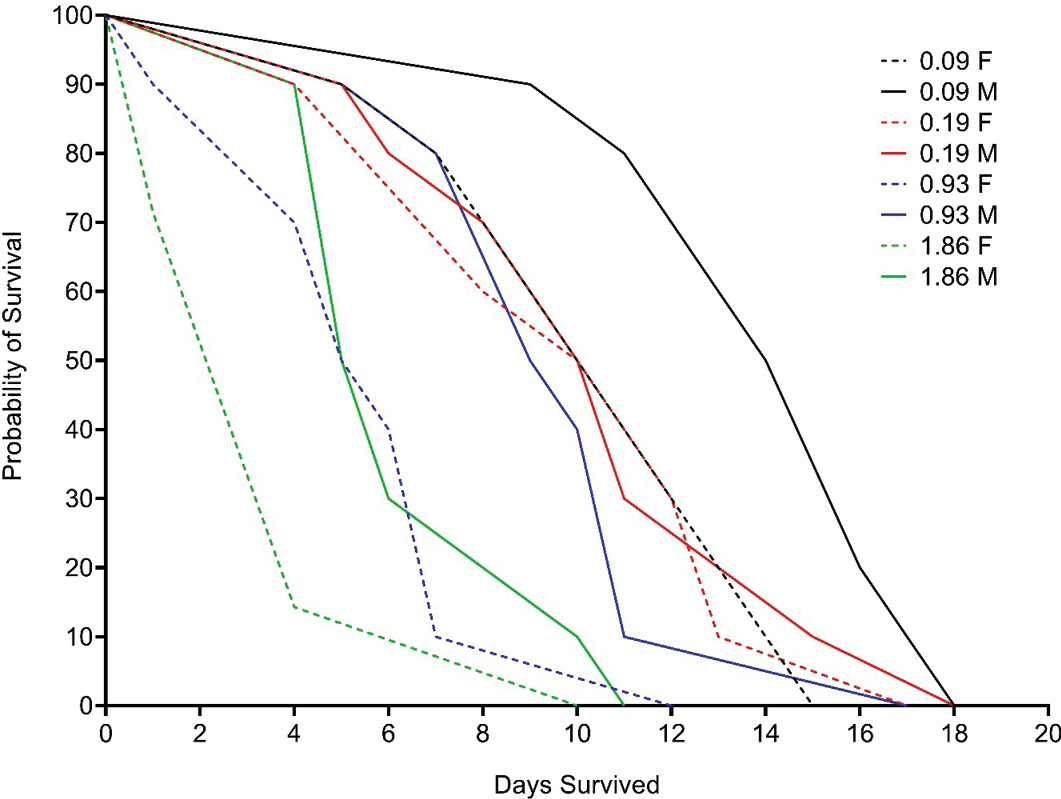
|
||
|
Starvation resistance of adult Acheta domesticus reared at various densities. All density and control groups were separated at 14 days of age (4th instar) and maintained until adulthood. Three to four weeks post-maturation individuals were separated and deprived of sufficient food. The number of days survived was recorded for all crickets and represented as mean ± SD. Multiple regression analysis suggests both sex (p = 0.0005) and density (p < 0.0001) to be significant predictors of starvation resistance. The Gehan–Breslow–Wilcoxon test showed significant differences in survivorship between the 0.93 cricket/cm2 (p = 0.0030) and 1.86 cricket/cm2 (p = 0.0008) groups compared to the lowest density (0.09 cricket/cm2) female group. Variation in survivorship was also evident in the 0.19 (p = 0.0328), 0.93 (p = 0.0063), and 1.86 (p = 0.0001) cricket/cm2 groups compared to the lowest-density males. |